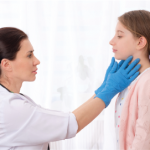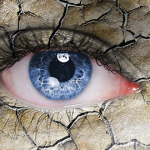“Sjögren’s [is] a wonderful example of a disease in transition and evolution,” says Frederick B. Vivino, MD, chief of rheumatology at Penn Presbyterian Medical Center and director of the Penn Sjögren’s Syndrome Center in Philadelphia. Dr. Vivino moderated a clinical symposium on Sjögren’s Syndrome (SS) at the 2009 ACR Annual Scientific Meeting in Philadelphia that brought together experts in dentistry, ophthalmology, and rheumatology about advances in diagnosis, treatment, and monitoring of this disease, as well as the burgeoning international collaborations to develop registries and disease activity indices.
Dryness Not Diagnostic
Although dry mouth and dry eyes are hallmark symptoms of SS, they are too nonspecific to be valuable in classification criteria, says leading Sjögren’s researcher Troy E. Daniels, DDS, MS, professor of oral pathology and pathology at the Schools of Dentistry and Medicine at the University of California, San Francisco. That’s because dryness of mucosal tissues can be attributed to a variety of other diseases and use of some medications. However, if clinicians are alert to indicators of salivary hypofunction, they can use these symptoms to steer them to the tests to be performed. Dental caries at the gingival margin, reduced or absent saliva pool in the floor of the mouth, reduced mucosal lubrication, and abnormal-appearing saliva expressed from the ducts are some of the intraoral indicators of salivary hypofunction. Signs of erythematous candidiasis are also common, characterized by loss of filiform papillae from the dorsal tongue, fissuring or erythema on the dorsal tongue, generalized patchy mucosal erythema, and angular cheilitis. Bilateral salivary gland enlargement may also be present.
In addition to the battery of standard blood tests (antinuclear antibodies, rheumatoid factor, erythrocyte sedimentation rate, and immunoglobins), the oral/salivary tests include measuring salivary flow, conducting salivary gland imaging, and doing salivary gland biopsies. However, none of these tests are yet diagnostically specific to Sjögren’s.
Efforts to develop standardized classification criteria have taken a leap forward since establishment of the Sjögren’s International Collaborative Clinical Alliance (SICCA). Dr. Daniels is SICCA co-director and reports that its National Institutes of Health funding was recently renewed until 2013. SICCA is made up of over 75 specialists from related disciplines and has launched an international registry to pool collection of data. Information about the registry, downloadable standard operating procedures for oral/salivary, rheumatologic, and eye examinations and baseline questionnaires used in the registry are available on the SICCA website at http://sicca.ucsf.edu. The growing cohort now includes more than 1,600 individuals. What the SICCA efforts are revealing is that no one symptom, sign, or test definitively defines Sjögren’s. For example, about 70% of Sjögren’s patients are positive for SS-A and 40% for SS-B, the marker antibodies for the disease. In the SICCA cohort, dry mouth or dry eyes were not associated with positive serum SS-A and -B. However, a combination of a focus score of greater than 1 on labial salivary gland biopsy, positive serum for SS-A and -B, and ocular staining are strongly associated with each other and form, says Dr. Daniels, “the core of what we now think of as Sjögren’s syndrome.”
From the rheumatologist’s point of view, notes Dr. Daniels, it’s important to first reduce oral symptoms and improve oral function. These strategies can include:
- Prescription of cevimeline or pilocarpine hydrochloride for dry mouth;
- Treating and retreating the erythematous oral candidiasis, a cause of mouth burning, usually with an oral antifungal, but sometimes with a topical vaginal antifungal if there is no visible salivary secretion;
- Selective recommendation of saliva substitutes to prevent nocturia, a frequent cause of sleep disruption in these patients; and
- Referral of patients to dentists who have worked with head and neck radiation or SS patients, or to multidisciplinary SS clinics in academic medical centers throughout the country.
There are also long-term clinical issues in these patients, Dr. Daniels says. In addition to the unique dental caries (also common in patients undergoing radiation therapy), about one-quarter of patients with SS will also develop palpable enlargement of the salivary glands. Lympho-epithelial lesions, which also appear in the gastrointestinal tract, lungs, and lymph nodes, require monitoring, because approximately 5% of them may progress to lymphoma.
Protecting the Eyes
Only in the last 10 years has dry eye been considered an inflammatory disease, says Gary N. Foulks, MD, a cornea specialist and Keeney Professor of Ophthalmology at the University of Louisville, Ky., and immediate past chair of the Sjögren’s Syndrome Foundation. He spoke about evaluating and managing ocular manifestations of SS.
“We now know that inflammation of the lacrimal glands, the lid margin, and the ocular surface can result in damage to the ocular surface, with symptoms of visual disturbance, reduced visual acuity, and discomfort,” he notes. Evaluation of dry eye comprises measuring production, stability, and osmolarity of the tear film; ocular staining; assessing eyelid function (frequency and completeness of the blink); and examination of the lid margin. Inflammation of the lid margin can result in anterior blepharitis (resulting in crusting around the eyelash base) or posterior blepharitis, which is often due to meibomian gland dysfunction. Plugging of the meibomian glands results in loss of lipids, leaving the tear film unprotected and prone to increased evaporation. Some signs of chronic meibomian gland dysfunction include telangiectasia, dimpling, and notching of the eyelid.
Management of dry eye is keyed to its severity and is now often guided by results of the International Dry Eye Workshop (DEWS), a consortium of experts that conducted an evidence-based review of the literature. Management guidelines are available on the Tear Film and Ocular Surface Society website, www.tearfilm.org. The typical sequence of treatments, says Dr. Foulks, is:
- Tear film enhancement or supplementation with a variety of different solutions, including polymers to both enhance the volume of the tear film and to stabilize it to prolong tear break-up times;
- Control of inflammation, formerly with the use of topical steroids, is now best accomplished with cyclosporine A or oral omega-3 essential fatty acids; and
- Control of lid margin disease with oral doxycycline, azithromycin eye drops, or even massage after application of hot compresses to the lid.
Once inflammation is under control, the next step is to focus on retention and protection of the tear film. Ophthalmologists use sustained release preparations as well as punctal plugs to prevent drainage. One newer example of the latter method uses a thermodynamic acrylic polymer that is inserted into the canaliculus and swells to obstruct the drainage. Finally, to protect the ocular surface, clinicians may advise use of new generation bandage soft contact lenses with high oxygen permeability or hard gas-permeable scleral lenses, which provide a reservoir of tears beneath the lens.
The Axis of Pathogenesis
Although some experts have focused on the management and understanding of symptoms in SS, rheumatologist Xavier Mariette, MD, PhD, of Bicêtre Hospital, Paris-Sud University, France, and others like him have been exploring its pathogenetic characteristics. The same internal signature, the same genetic predisposition, and the same involvement of B-cell activating factor of the tumor necrosis factor family have led Dr. Mariette, a leading SS researcher, to term Sjögren’s “the lupus of the mucosa.”
Dr. Mariette’s investigations in the last decade have elucidated several possible targets for therapeutics in SS. Interferon type 1 or 2; IL-21; activation of B cells; and BAFF make up what he calls “the axis of pathogenesis” and should be explored as biologics gain traction in treating other autoimmune diseases. Because lymphomas in SS arise from autoimmune B cells, an efficient immunosuppressive therapy should decrease the risk of lymphoma in SS, Dr. Mariette believes. Based on a 2007 study validating the safety and tolerance of rituximab in Sjögren’s, Dr. Mariette declares, “Now is the time for randomized controlled trials of rituximab” in Sjögren’s.1
To efficiently conduct such studies requires new tools for measuring disease activity, Dr. Mariette says. He was one of three co-conveners of a European League Against Rheumatism (EULAR) initiative to develop a disease activity index for SS. The EULAR Sjögren’s Syndrome Disease Activity Index (ESSDAI) has now been designed and published and will proceed to validation in the near future. In the meantime, Dr. Mariette strongly believes that researchers in Sjögren’s and lupus should be collaborating. As demonstrated from this panel of presenters, international multidisciplinary collaborations are the key to discovering more definitive early diagnostic indicators and treatment protocols—and that is good news for the approximately 4 million Americans with the condition.
Gretchen Henkel is a medical journalist based in California.

